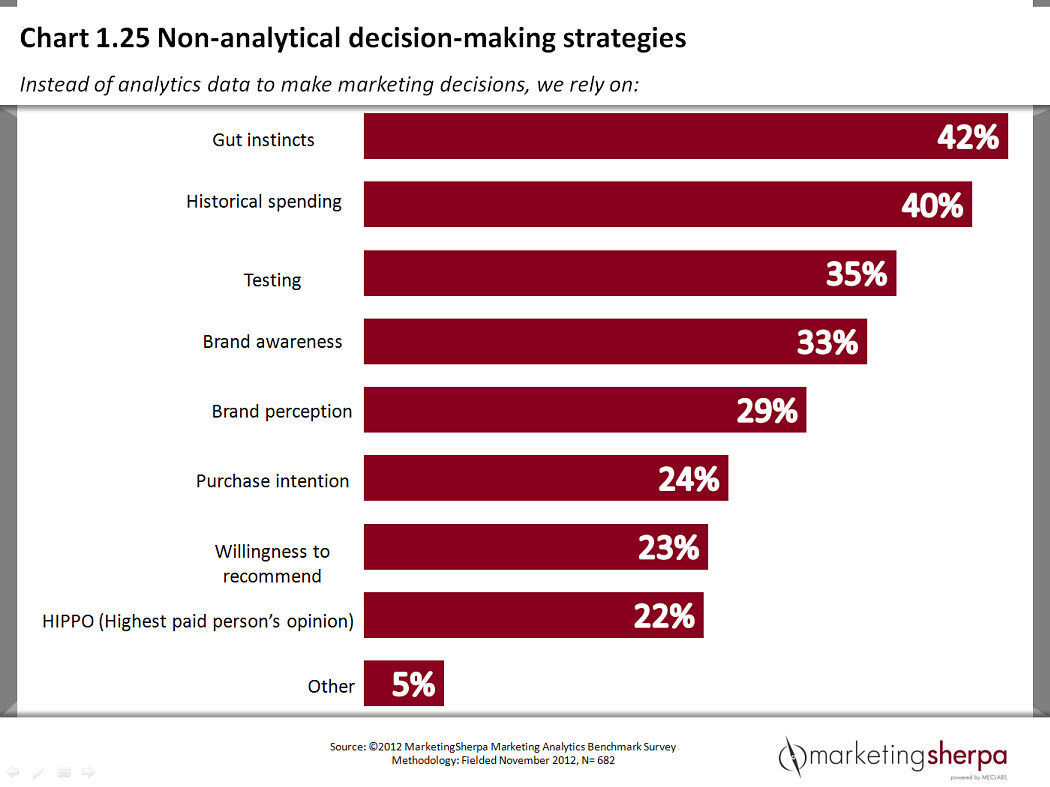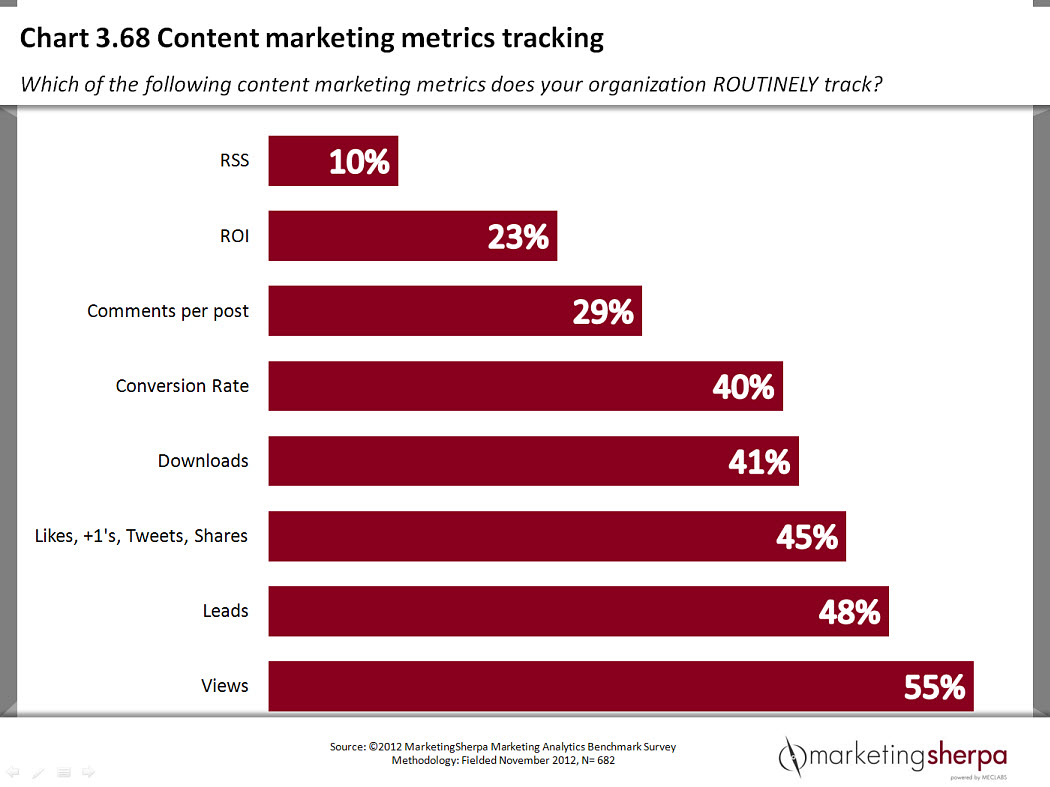What is Data? A discussion about getting value from your marketing analytics
What is marketing data really? When used right, it’s not just numbers that tell you what happened.
That is what I like to call the “newsman approach” to marketing analytics – information that simply sums up previous customer behavior.
You don’t want to be the newsman. You don’t want to be Walter Cronkite, Tom Brokaw or Brian Williams. You, dear marketer, must look to the likes of Al Roker and Willard Scott. After all, it is the intrepid weatherman that discusses not only what already happened, but what is going to happen.
I discussed with Scott Hutcheson, Content Director, Paramore, how to effectively use marketing data to look beyond a simple gut reaction to numbers to find out what they can tell you about future customer behavior in this, the most recent episode of MarketingSherpa Marketing Research in Action …
In this episode, Scott and I discussed research from the MarketingSherpa 2013 Marketing Analytics Benchmark Report, which is sponsored by Paramore…
00:42 – Up is good, down is bad? Not so simple. Don’t settle for gut reactions to your marketing analytics. Scott and I discussed non-analytical decision-making strategies.
4:44 – What can you learn from page views? Scott and I discussed content marketing metrics tracking.
6:56 – And lastly, how to become the Al Roker of marketing analytics, as we discussed analytics objectives for 2013.
In preparing for this interview, Scott sent me his take on marketing analytics, which I believe sums it up quite well …
“Mark Twain said it best when he said there are three types of untruths: lies, damned lies and statistics. The insight from that quote is to realize that the data, on its own, has no value without proper interpretation. We can shape data to support our forgone conclusions if we want to. It’s not enough just to review data. It’s critical to know what data to review and how to interpret it. This is where real positive implementations come from.”
Related Resources:
Marketing Data: Using predictive analytics to make sense of big data
Measuring Content Marketing: How to measure results, find gaps and grab opportunities
Marketing Research Chart: Top analytics objectives for 2013
Categories: Marketing content marketing, customer behavior, marketing data, Marketing Research in Action













Hi Daniel, I really liked this piece that discusses making marketing decisions based on instinct. These days marketing automation and the ability to measure everything really leaves no excuse to have marketing without real analysis, but I think a lot of companies are still very traditional with their marketing departments. The next step after analysis is to be able to react in real-time. Our platform provides this opportunity with B2B website personalization. Tamar, Insightera